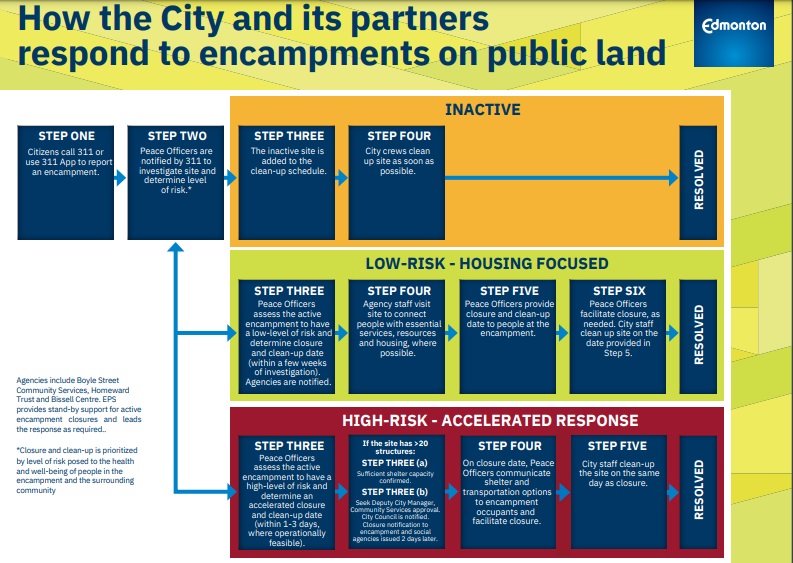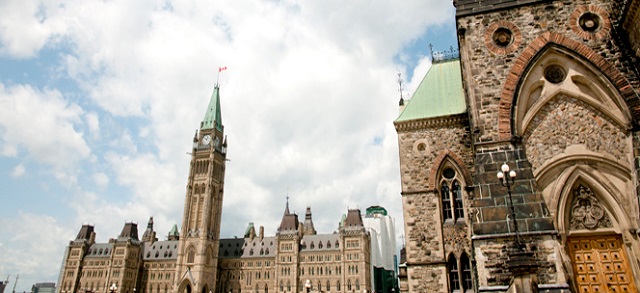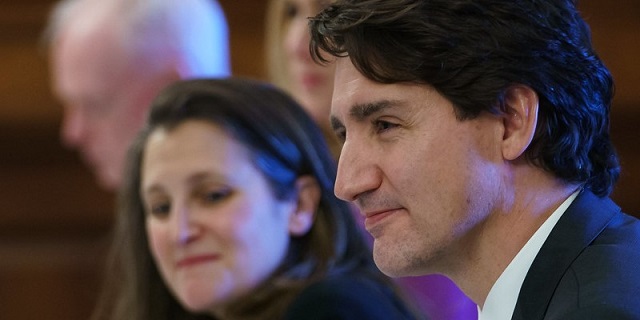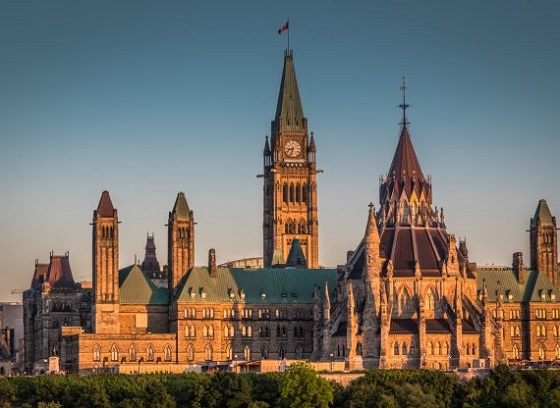Community
Lots to love at historic sites, museums, archives

Lots to love at historic sites, museums, archives

Stephansson House opens to the public Tuesday, May 15 for the summer season. Experience this historically furnished 1927 home of Stephan G. Stephansson, Icelandic pioneer and one of Canada’s most prolific poets.
New programs and experiences at Alberta heritage facilities are setting the stage for excitement this May long weekend and throughout the summer.
May 15 kicks off the summer season for many of Alberta’s 20 provincially owned and operated historic sites, museums and Provincial Archives. With a stellar schedule of special events and programming ahead, everyone is encouraged to plan a visit this summer.
As the portals to our past, Alberta’s heritage facilities are more than exhibits and artifacts — they are something to be experienced and explored.
“We are excited to welcome hundreds of thousands of visitors to our heritage facilities this summer. I think sometimes we forget that we do not need to travel far to experience history; Alberta’s historic sites, museums and provincial archives are a testament to that. Whether you are looking for a new activity, planning a family outing or wanting to embark on a unique adventure, historic sites and museums offer the full package. I encourage everyone to plan a visit to one of our sites this summer to step back in time and uncover the stories Alberta has to tell.”
Ricardo Miranda, Minister of Culture and Tourism
From dinosaurs and ancient bison-hunting culture to antique vehicles, vintage film, Alberta’s fur trade, and delicious cuisine, families and visitors of all ages can enjoy hands-on learning, fun activities and soak in beautiful Alberta scenery.
New programs and experiences
A variety of activities are taking place this summer, including new programs and must-see-before-they-go exhibits, including:
- Voyageur Experience at Victoria Settlement (near Smoky Lake)
Strengthen your knowledge of Métis culture and experience what it was like to be a voyageur paddling across Canada in a large birch canoe carrying furs or precious cargo over countless portages. This unique adventure at Métis Crossing and Victoria Settlement takes you through two locations, various hands-on activities and paddling on the North Saskatchewan River. Recommend pre-registering until August 26.
- Delicious cuisine at Rutherford House (Edmonton)
Vintage Fork Restaurant is a new, unique culinary dining experience at Rutherford House Provincial Historic Site giving visitors a tasty twist on history. Open year-round from Tuesday to Sunday, visitors can enjoy brunch, lunch and afternoon tea through daily menus.
- New exhibit at Ukrainian Cultural Heritage Village (east of Edmonton, opens May 19)
Check out the new exhibit Peter Shostak: Painting to Remember. Inspired by his rural Alberta upbringing, Peter’s artwork reflects the stories the earliest Ukrainian settlers in Alberta. Open May 19 to Sept. 3. This year’s popular events Vintage Day and the Friends Ukrainian Music Festival are combined for a day full of fun on Sunday, June 24.
- Explore The McLaughlin Story exhibition (Westaskiwin and Cardston)
Check out this unique exhibition about how a family of risk takers shaped Canada’s transportation history. Visit the Reynolds-Alberta Museum (Wetaskiwin) and Remington Carriage Museum (Cardston) to find out how the McLaughlin family rose from making axe handles to becoming the largest carriage manufacturer in the British Empire, and ultimately grew to be General Motors Company of Canada.
- Last chance to see 150 Firsts exhibit at Provincial Archives of Alberta (Edmonton) This is your last summer to catch the exhibit, 150 Firsts: How Alberta Changed Canada…Forever, to learn about 150 Canadian firsts that occurred because Albertans were the first to make them happen. The exhibit closes August 1. Visitors can also bring non-perishable food items for the Edmonton Food Bank until August 1.
Those looking to be extra adventurous this year can experience all provincial historic sites and museums with the Experience Alberta’s History annual pass. Summer is the perfect time to discover multiple facilities!
Connect online
It’s easier than ever to connect with provincial historic sites and museums through mobile-friendly websitesand social media channels.
Follow sites online to stay connected with information on special events, fun facts and photos. Visitors are encouraged to share photos of their visit on social media using the hashtag #ABhistory.
Addictions
‘Harm Reduction’ is killing B.C.’s addicts. There’s got to be a better way

From the Frontier Centre for Public Policy
B.C. recently decriminalized the possession of small amounts of illicit drugs. The resulting explosion of addicts using drugs in public spaces, including parks and playgrounds, recently led the province’s NDP government to attempt to backtrack on this policy
Fuelled by the deadly manufactured opioid fentanyl, Canada’s national drug overdose rate stood at 19.3 people per 100,000 in 2022, a shockingly high number when compared to the European Union’s rate of just 1.8. But national statistics hide considerable geographic variation. British Columbia and Alberta together account for only a quarter of Canada’s population yet nearly half of all opioid deaths. B.C.’s 2022 death rate of 45.2/100,000 is more than double the national average, with Alberta close behind at 33.3/100,00.
In response to the drug crisis, Canada’s two western-most provinces have taken markedly divergent approaches, and in doing so have created a natural experiment with national implications.
B.C. has emphasized harm reduction, which seeks to eliminate the damaging effects of illicit drugs without actually removing them from the equation. The strategy focuses on creating access to clean drugs and includes such measures as “safe” injection sites, needle exchange programs, crack-pipe giveaways and even drug-dispensing vending machines. The approach goes so far as to distribute drugs like heroin and cocaine free of charge in the hope addicts will no longer be tempted by potentially tainted street drugs and may eventually seek help.
But safe-supply policies create many unexpected consequences. A National Post investigation found, for example, that government-supplied hydromorphone pills handed out to addicts in Vancouver are often re-sold on the street to other addicts. The sellers then use the money to purchase a street drug that provides a better high — namely, fentanyl.
Doubling down on safe supply, B.C. recently decriminalized the possession of small amounts of illicit drugs. The resulting explosion of addicts using drugs in public spaces, including parks and playgrounds, recently led the province’s NDP government to attempt to backtrack on this policy — though for now that effort has been stymied by the courts.
According to Vancouver city councillor Brian Montague, “The stats tell us that harm reduction isn’t working.” In an interview, he calls decriminalization “a disaster” and proposes a policy shift that recognizes the connection between mental illness and addiction. The province, he says, needs “massive numbers of beds in treatment facilities that deal with both addictions and long-term mental health problems (plus) access to free counselling and housing.”
In fact, Montague’s wish is coming true — one province east, in Alberta. Since the United Conservative Party was elected in 2019, Alberta has been transforming its drug addiction policy away from harm reduction and towards publicly-funded treatment and recovery efforts.
Instead of offering safe-injection sites and free drugs, Alberta is building a network of 10 therapeutic communities across the province where patients can stay for up to a year, receiving therapy and medical treatment and developing skills that will enable them to build a life outside the drug culture. All for free. The province’s first two new recovery centres opened last year in Lethbridge and Red Deer. There are currently over 29,000 addiction treatment spaces in the province.
This treatment-based strategy is in large part the work of Marshall Smith, current chief of staff to Alberta’s premier and a former addict himself, whose life story is a testament to the importance of treatment and recovery.
The sharply contrasting policies of B.C. and Alberta allow a comparison of what works and what doesn’t. A first, tentative report card on this natural experiment was produced last year in a study from Stanford University’s network on addiction policy (SNAP). Noting “a lack of policy innovation in B.C.,” where harm reduction has become the dominant policy approach, the report argues that in fact “Alberta is currently experiencing a reduction in key addiction-related harms.” But it concludes that “Canada overall, and B.C. in particular, is not yet showing the progress that the public and those impacted by drug addiction deserve.”
The report is admittedly an early analysis of these two contrasting approaches. Most of Alberta’s recovery homes are still under construction, and B.C.’s decriminalization policy is only a year old. And since the report was published, opioid death rates have inched higher in both provinces.
Still, the early returns do seem to favour Alberta’s approach. That should be regarded as good news. Society certainly has an obligation to try to help drug users. But that duty must involve more than offering addicts free drugs. Addicted people need treatment so they can kick their potentially deadly habit and go on to live healthy, meaningful lives. Dignity comes from a life of purpose and self-control, not a government-funded fix.
Susan Martinuk is a senior fellow at the Frontier Centre for Public Policy and author of the 2021 book Patients at Risk: Exposing Canada’s Health Care Crisis. A longer version of this article recently appeared at C2CJournal.ca.
City of Edmonton
City of Edmonton defends response to homeless encampments

Edmonton homeless encampment from 2022 (Photo: Alexander Shamota, Alberta Views Magazine).
News release from the City of Edmonton
Overview of the City of Edmonton’s information in Court about its response to homeless encampments
- While numbers of shelter beds and unhoused persons vary from day to day, Edmonton’s shelters have had excess capacity throughout 2023, with even more capacity available in 2024. In periods of extreme demand, capacity can be scaled upwards immediately. A person seeking indoor shelter in Edmonton will never be left without an indoor place to shelter.
- Edmonton’s shelter system supports and accommodates persons with diverse backgrounds and lived experiences, including persons who use drugs, all genders and sexualities, all religions, couples, and persons with disabilities. Edmonton has Indigenous-led shelter spaces, women-only spaces, and specialized shelter programming for Indigenous persons who have experienced trauma.
- Outdoor sheltering poses severe dangers to the unhoused. Evidence will be presented of examples of gang victimization, armed robbery, physical and sexual assault, sexual exploitation, sanitation issues leading to disease, frostbite and cold-weather injuries, and fatalities caused by tent and encampment fires. These risks will be shown to be attributable to outdoor sheltering, not the removal of encampments.
- In the last five years, Edmonton Fire Rescue Services has reported at least seven deaths and 26 injuries from 276 fires that could be attributed to tents or encampments. This number is likely a significant underestimate due to the challenges inherent in investigating these types of fires.
- Expert medical evidence from Alberta’s former Chief Medical Officer of Health will be presented showing that encampments increase potential communicable disease transmission and fire- and violence-related injuries when compared with emergency shelters.
- Encampments can pose a danger to the community at large. Evidence will be presented of violence arising from encampments, accumulations of human feces, biohazardous waste, weapons and drug paraphernalia surrounding encampments, uncontrolled fires and propane cylinder explosions, and examples of wildfires starting at encampments in Edmonton’s natural areas.
- The number of complaints from members of the public has significantly risen over the last number of years. Between January 1, 2023 and October 22, 2023, there were 13,683 complaints from concerned Edmontonians.
- Encampment closures are evaluated on a risk matrix. This is an attempt to respond to community concerns, ongoing damage to the environment and infrastructure, as well as the inherent dangers in outdoor encampments. When camps are first assessed and again when closed, offers are made to take individuals to a shelter. As well, during the encampment closure process, opportunities are provided for individuals to connect with various community organizations supporting the unhoused.
- Evidence will be presented on the impacts associated with Camp Pekiwewin (2020). The City has been provided evidence of physical and sexual violence, gang violence, sex trafficking, sanitation and biological health hazards for occupants of Camp Pekiwiwin. Evidence provided by residents of the Rossdale community shares examples of violence and physical assault, theft of property, residents leaving the community for their own safety, vandalism, fire, and significant River Valley damage due to firewood cutting by encampment occupants.
-

 Economy13 hours ago
Economy13 hours agoExtreme Weather and Climate Change
-

 Jordan Peterson1 day ago
Jordan Peterson1 day agoJordan Peterson slams CBC for only interviewing pro-LGBT doctors about UK report on child ‘sex changes’
-

 Freedom Convoy1 day ago
Freedom Convoy1 day agoTrudeau’s use of Emergencies Act has cost taxpayers $73 million thus far
-

 COVID-192 days ago
COVID-192 days agoPro-freedom Canadian nurse gets two years probation for protesting COVID restrictions
-

 Economy2 days ago
Economy2 days agoMassive deficits send debt interest charges soaring
-

 Agriculture1 day ago
Agriculture1 day agoBill C-282, now in the Senate, risks holding back other economic sectors and further burdening consumers
-

 Economy2 days ago
Economy2 days agoFederal budget’s scale of spending and debt reveal a government lacking self-control
-

 Alberta22 hours ago
Alberta22 hours agoDanielle Smith warns arsonists who start wildfires in Alberta that they will be held accountable







